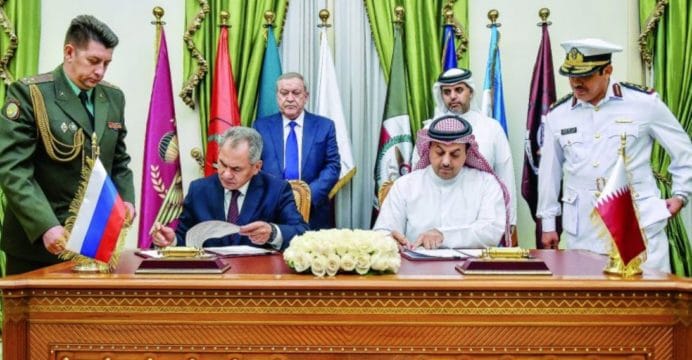President Donald Trump’s 13-day trip to Asia is being facilitated by dozens of U.S. military refueling tankers and cargo aircraft that regional operators say are needed in the Middle East to fight terrorists.
Initial estimates indicated the president’s trip would require 80 tanker and cargo missions in total, officials told Aviation Week. The Pentagon declined to provide exact numbers of aircraft required. But spokesman U.S. Navy Capt. Kevin Stephens stressed that air mobility support for the trip, which includes stops in Japan, South Korea, China, Vietnam, and the Philippines, is an important mission with vital national security implications.
The level of air mobility support provided for the current trip is “not extraordinary” and consistent with that provided for similar travel in previous administrations, Stephens stressed.
But the trip, coming close on the heels of a series of devastating hurricanes in the Southern U.S. and Caribbean, has continued to limit regional commanders’ access to additional mobility assets at a time when they are trying to support both a surge in Afghanistan and defeating the Islamic State in Iraq and Syria.
So far, the U.S. Air Force has been able to limit the effect on the fight by asking units to take on extra missions, rerouting flights, and pulling certain aircraft off standby, said Brig. Gen. Gregory Jones, U.S. Air Force Central Command (Afcent) director of mobility forces, in a Nov. 4 interview at the Combined Air Operations Center (CAOC) here. Top priority equipment—primarily munitions, food and water—is getting where it needs to go, but less urgent resources such as construction material are delayed.
If there is a sudden surge in fighting, however, it would be a struggle to keep up with demand, Jones said.
“Right now the way that the fighting is going on we’re able to keep up. But if there was a spike somewhere or a catastrophic event, if they ran out of ammunition at a certain location, for example, we would have to reprioritize,” Jones said.
The CAOC is the command-and-control center that monitors and directs air operations in the region.
Afcent’s limited mobility assets are stretched thin across multiple combat zones from the Horn of Africa to Pakistan. When the president announced a surge of 3,500 troops to Afghanistan, the service hoped U.S. Transportation Command (Transcom) would lend additional aircraft—C-5 Galaxy,
Globemaster and
Hercules airlifters, KC-10 and KC-135 tankers, as well as contracted commercial airliners—to transport troops and equipment to theater.
But for most of the summer, all of Transcom’s mobility assets were dedicated to evacuations and moving precious food and water to civilians stranded by the storms. This left no additional aircraft available to help with the Afghanistan surge.
“We didn’t lose anything in country—what we didn’t get was additional help with the 3,500-ish plus-up in Afghanistan, plus their equipment,” Jones said. “Normally we would’ve gotten additional help from Transcom with that, and we didn’t get it, so we had to take that out of hide.”
Afcent expected Transcom would begin lending a hand as soon as it got its head above water. But then Trump decided to take a 13-day, five-country trip to Asia at a time when tensions in the region are sky-high over North Korea’s nuclear weapons program. Transcom has dedicated more than 80 cargo and tanker missions over the next few weeks to the presidential tour, Jones said.
Stephens, Transcom chief of public affairs, said 80 missions was an initial estimate, and he now believes the trip will take “somewhat” fewer. Still, he acknowledged there could be a delay in getting some equipment to forces in the Middle East.
“Based on the priorities, there are routinely circumstances in which the movement of certain assets are temporarily delayed in favor of higher-priority missions,” Stephens said. “We work to alleviate the effects of any delays by communicating the constraints daily with combatant commands through their mobility liaison teams.”
Limited access to C-17s is particularly stressing, as the larger U.S. Army vehicles cannot fit inside the smaller C-130s, Jones said. He noted that once Trump’s trip is over, he expects to get additional help from Transcom with mobility for the Afghanistan surge.
On top of flying the chief executive to a given location, presidential travel involves the movement of large numbers of personnel and equipment, including communications, security, logistics, local travel and maintenance, Stephens said. Visiting multiple locations in close succession also drives up requirements.
“On any given day there is a set amount of air mobility capacity available for military missions,” Stephens said. “U.S. Transcom, as DOD’s manager for transportation, plans, allocates, routes, schedules and tracks available air assets in order to meet commanders’ requirements.”

